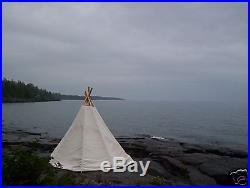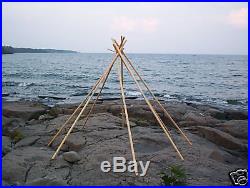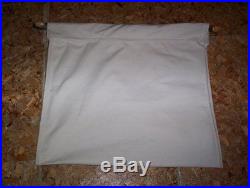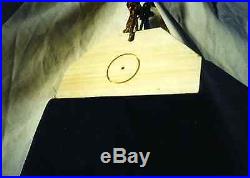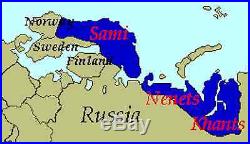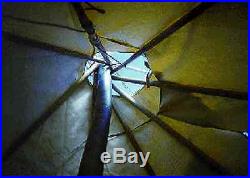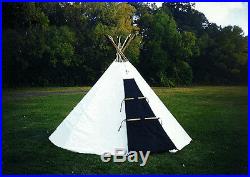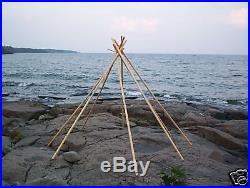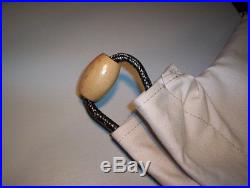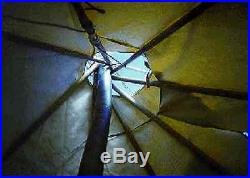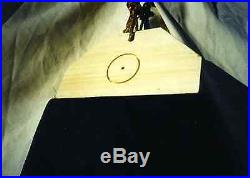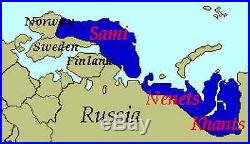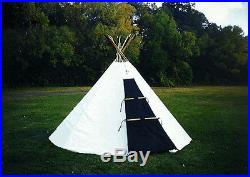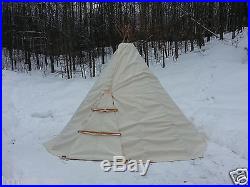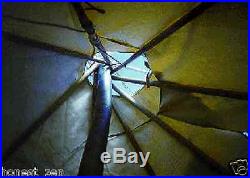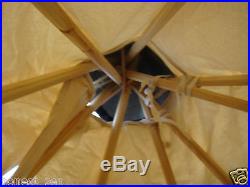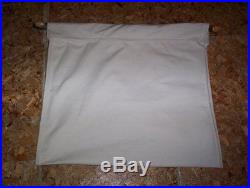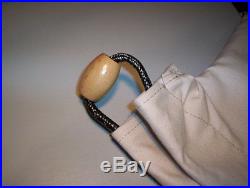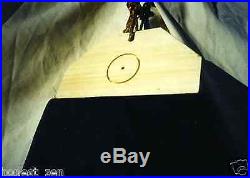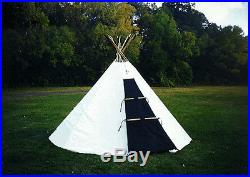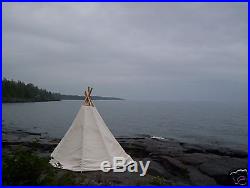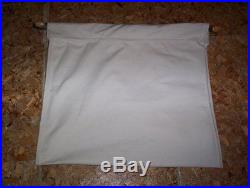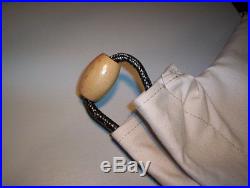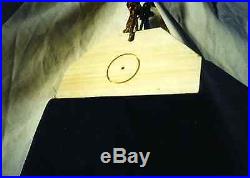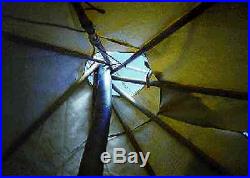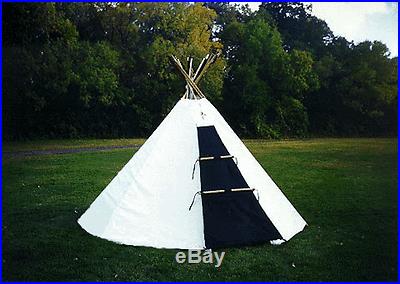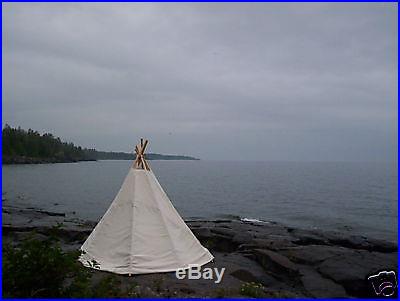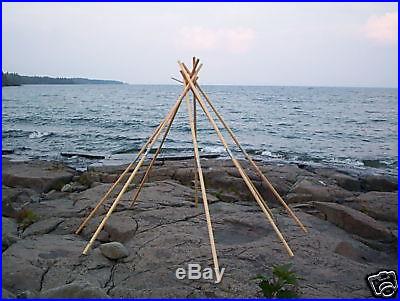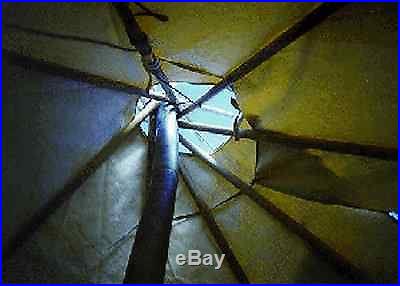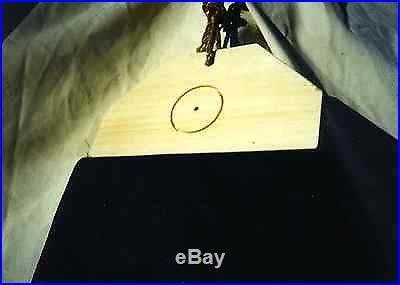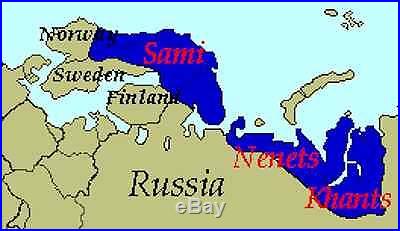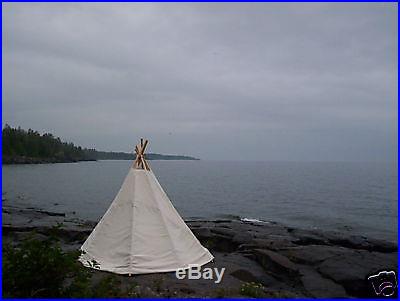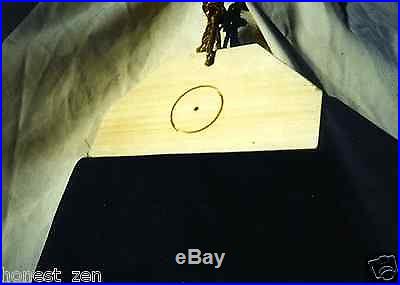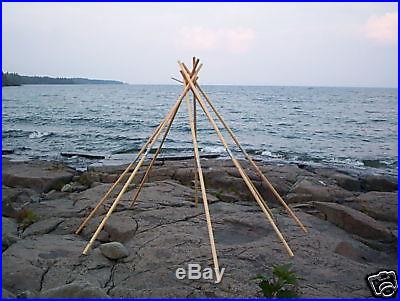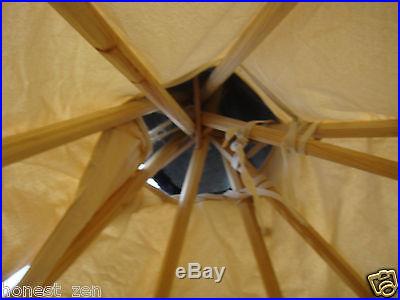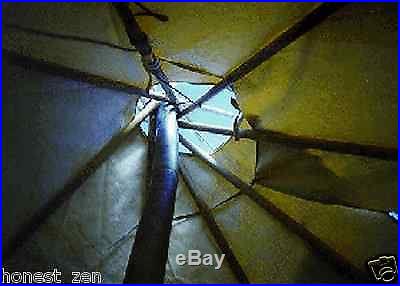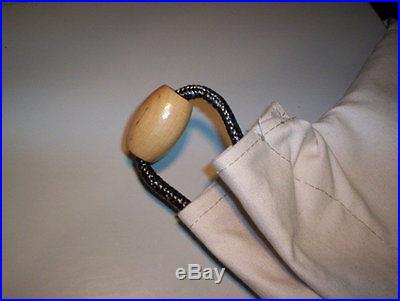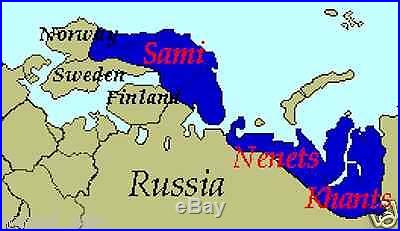
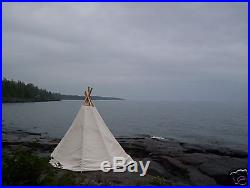

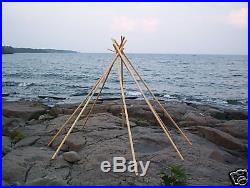
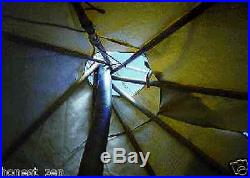

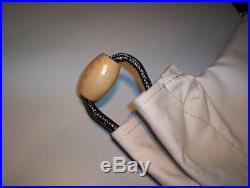

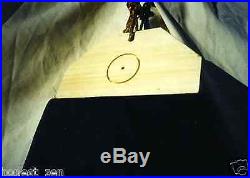
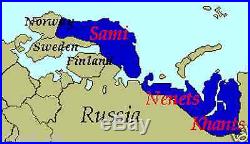
PLEASE NOTE: THIS PAGE IS FOR THE COMPLETE PAC KAGE OF A LAVVU – INCLUDING PO LES. The lavvu poles shown in the photo are included with this order. Note Also: We often have backorders. What is a Lavvu? The Lavvu is a temporary dwelling used by the Sami people (also spelled “Saami”, but derogatorily known as’Lapps’ or’Laplanders’) of northern Scandinavia and the Nenets and Khants of northern Russia. Its simplicity enabled the Sami to move quickly with their semi-domesticated reindeer herds at a moment’s notice. This structure enabled the indigenous cultures of the treeless plains of northern Scandinavia and the High Arctic of Eurasia to live in harmony with nature. Although the Lavvu can be easily confused with the Native American Tipi. It’s not a Tipi! The differences between the two structures are reflected in their respective environments and cultures. The lavvu is normally smaller and can be set up by only one person. Being more centered to the ground, the Lavvu is also better able to endure the fierce winds of the Scandinavian tundra, thus a more stable structure. Few structures used by indigenous peoples, with the exception of the Inuit (Eskimo) Igloo, are as stable in strong winds. What are the materials in this lavvu? The lavvu material is mad e of 10.10 ounce Cotton Duck fabric, which is a common and natural material. Most tipis in North America are made of the material and, with proper care, will last for many years to come. The disadvantage with cotton duck over Sunforger is that it is not mold or mildew, or water resistant. If you wish something more mildew resistant, please check out our Sunforger lavvu items. Sunforger has been used for many years in other tent structures such as tipis, and it has been used very useful for lavvus that will be set up for over the entire season and/or in wet environments. There is little difference in fire resistance between cotton duck and Sunforger material. This fabric is most recommended for the following conditions. A If your lavvu will be set up for a longer period of time in one place, such as over the season; or… B If you live in a damp/wet environment such as east of the Mississippi River or along the Pacific Northwest. Lavvu, meaning that there are other tents out there that claim to have a’lavvu’, but are something very different. A traditional lavvu is not made of synthetic materials, which means you can have a fire inside without the worry of plastic melting or fire hazards. The material is made of 10 ounce cotton duck that is naturally fire resistant. There is no center pole in the lavvu so that you can have a campfire inside to cook, or to keep warm in winter or summer. What does the lavvu look like? This lavvu is ten feet in diameter and about eight feet high and can sleep three people very comfortably with a fire inside, or four people without the fire. There is a smoke hole at the top to let smoke rise out of the lavvu and during set-up, can be made small enough to keep rain or snow out. There is an attached door, a carrying bag, and a thirty-plus page booklet that describes everything you need to know about the lavvu. Similar to a Native American Teepee, there are no guy-wires or ropes to worry about as with other tents. The lavvu can be set up quickly by one person in about ten minutes and taken down in half that, with the total weight of about 28 pounds. Unlike the tipi, a Lavvu dose not need any stakes! No stakes are need for the lavvu. Because of the lower angle of the tent wall, the wind tends to push the lavvu into the ground, rather than pushing it over. The tipi requires stakes to be pounded into the ground, as the wind will tend to blow it over. Carrying bag for the lavvu cover. Complete set of poles. Carrying bag for the poles. Instruction booklet ; both the lavvu cover set up, and the pole setup. I MPORTANT – The door color for this lavvu will come in the standard natural off-white , the same color as the fabric color. Are poles needed for the lavvu? Yes, poles will be needed for your lavvu and are included with this order , however t he instruction manual will show you how to make your own poles. Link at the top under the. Section at the top. There you can view our complete inventory. You can either, cut down your own poles from the forest or make your own from a lumber yard. The booklet that comes with the order will tell you what to look for and how to do both. What are these poles. The poles that you are viewing on this page are lavvu poles for a ten foot diameter lavvu. A lavvu is the traditional tent used by the Sami People of northern Scandinavia used mostly by the reindeer herders and is still in use today. What does the order include. There are a total of nine complete poles that extend out to ten feet long when assembled; and eight-teen, five foot long poles when disassembled. The whole order includes the following. Eighteen, five foot long wooden poles, that extend to nine, ten foot poles when assembled. One carrying bag to carry everything in one package. Nine metal spacers to connect two poles together. Three fork rods for the three’forked’ poles to support the structure when setup (see detail of top half) Three slats that go with the door of any 10 foot lavvu (Sunforger or Cotton Duck). Instruction sheet on how to assemble them together. The poles can be assembled in less than five minutes and can support the structure of the lavvu with no guy wires or rope support. Three’forked’ poles are interlocked together to form a tripod that is the main structural support, while the remaining’straight’ poles are laid up against the tripod. Total weight for the entire package is about 55 pounds, and when bagged the dimensions are 63 inches long by 10 by 8 inches. See our lavvus in the. These poles are unfinished, meaning that they are not painted, varnished, or sealed. The advantages of having this multi-pole system is that it’s. The way the lavvu is supposed to be. Similar to a Native American Tepee, y. Ou can also have a fire safely inside with plenty of room. A single-pole bell tent you can not. Thank you for stopping by.. The item “Sami Lavvu 10′dia. Cotton Duck WithPOLES! Complete Package (tipi/tepee/yurt/tent)” is in sale since Saturday, April 06, 2013. This item is in the category “Sporting Goods\Outdoor Sports\Camping & Hiking\Tents & Canopies\Tents”. The seller is “honest_zen” and is located in Saint Paul, Minnesota. This item can be shipped to United States, all countries in Europe, Canada, Japan, Brazil, Australia.
- Capacity: 3-4 Persons
- Size: 10 feet/3.3 meter diameter
Recent searches
- polish lavvu for sale
- canvas lavvu


